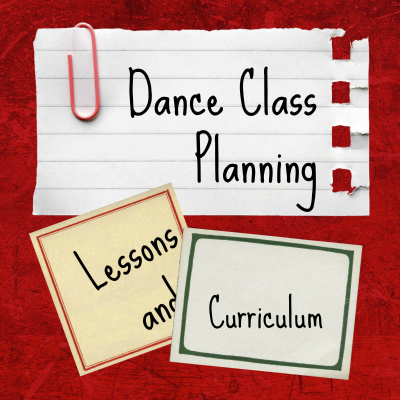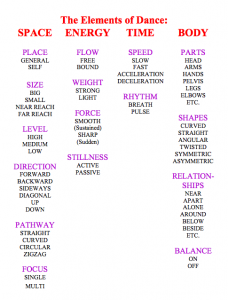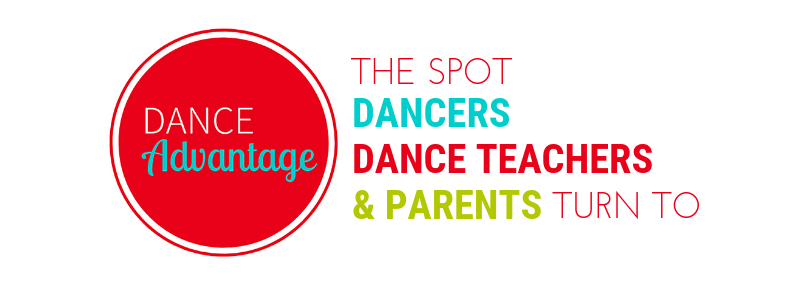Part One of this series is about developing curriculum for both short and long courses of study. It includes some valuable information for the planning of lessons. You may want to read it first.
 Lesson Planning
Lesson Planning
A Note About My Process
Some folks like to teach on the fly. I tend to be a planner. I feel most comfortable in front of a class when I’ve thought through what I’m going to do. Not every detail of the class needs to be planned but I prefer to have a clear outline or goal in mind. Just as strong technique brings freedom to the dancer, a strong lesson structure brings freedom to my teaching. I enjoy creating classes that express who I am as a person, an artist, a dancer. Though I often build upon existing curriculum or upon the long history of teachers and syllabi I have experienced as a student. I’ve found that my teaching is at its best when I’ve experimented, tweaked, and discovered what works for me.
Two Types of Lesson Plans
When outlining a class and designing exercises, I often choose a focus on which to base the material in class. Not every single element of class must revolve around the chosen focus, and I don’t necessarily follow this type of plan for every class but, I find this method keeps me from falling into a rut when creating exercises and helps students make connections in applying technique.
Skill Focus
Choosing one or two skills to focus upon during a class can be a powerful device. It helps students to make connections between the basics and more complex movements. Particularly for beginner level classes, select something general.
For instance, perhaps the skill of the day is battement tendu.
- Spend a bit of extra time discussing tendu at the barre. [How does the foot move along the floor? Does the leg bend or remain straight? From where does turnout of the leg initiate?]
- Then, point out places tendu is used elsewhere in the barre combinations and have the class focus on perfecting that portion of the movement (for now it is okay if other things fall by the wayside). Even if it is not a direct usage, it is still important to point out connections — the articulation of the foot in tendu reflects the peeling articulation of the foot in jumps (for instance). Do the same with center exercises and traveling progressions.
- Finish the end of the lesson with a tendu review. [How did focusing on the tendu change certain movements? What type of imagery helped them to better understand the action of a tendu? What are three important things to remember about tendu? What are some other dance skills, not practiced today, that also utilize tendu?]
The chosen skill can be anything – plié, carriage or support of the arms, epaulement, focus of the eyes, speed or agility, lowering the center of gravity in jazz dance, listening for the downbeat or meter in the music, lengthening the spine, turnout, complete closing of the feet in 1st/5th… the possibilities are endless. And, you may or may not choose to build your exercises around this theme. It is up to you!
Concept Focus
When you focus on a “concept” to plan your lessons the process is very similar to skill focus. However, rather than contemplating a certain skill, the students are thinking about the basic elements of dance as they relate to whatever dance form, style, skill, or movement they are executing. The basic elements of dance are time, space, and energy, but these can be further broken down:

Here is a basic guide to incorporating these into your lesson/curriculum planning.
- Choose an element. Let’s say, the concept of force which involves smooth/sustained and sharp/sudden movements.
- Look for ways to contrast these two opposites as you create exercises for the lesson, or look for ways to point out these contrasts as you perform an already prepared lesson.
- Present and demonstrate these concepts briefly for the class, letting students know that they will be focusing on these contrasting elements for the day.
- Lead students in discovering the smooth, sustained qualities of plié, the sudden attack of a piqué turn, or whatever is on the menu for that lesson. Always bring their attention to ways they can enhance the movment by thinking about, exploring, or contrasting (Can you perform a pirouette in a sustained manner and also in a sharp or sudden manner?) the concept of force.
- Don’t forget to review the concept by requesting students’ feedback and thoughts.
Performance, Musicality, and Artistry

Additional concepts with which you might attempt to experiment in a lesson plan are performance, musicality, and artistry. Though more abstract concepts, these can be addressed as the focus of a class much as you would explore a skill or concept. Perhaps the goal of one lesson is to point out opportunities and methods for “dancing” or “performing” the everyday exercises done in class. Another lesson may explore the use of a variety of meters, moods, or contrasting accompaniment. Yet another lesson could seek to examine and learn a particular historical dance variation or style. Use your imagination!
How do you plan your lessons? Do you have a method? What ideas or tips can you share for readers?
Nichelle Suzanne is a writer specializing in dance and online content. She is also a dance instructor with over 20 years experience teaching in dance studios, community programs, and colleges. She began Dance Advantage in 2008, equipped with a passion for movement education and an intuitive sense that a blog could bring dancers together. As a Houston-based dance writer, Nichelle covers dance performance for Dance Source Houston, Arts+Culture Texas, and other publications. She is a leader in social media within the dance community and has presented on blogging for dance organizations, including Dance/USA. Nichelle provides web consulting and writing services for dancers, dance schools and studios, and those beyond the dance world. Read Nichelle’s posts.

